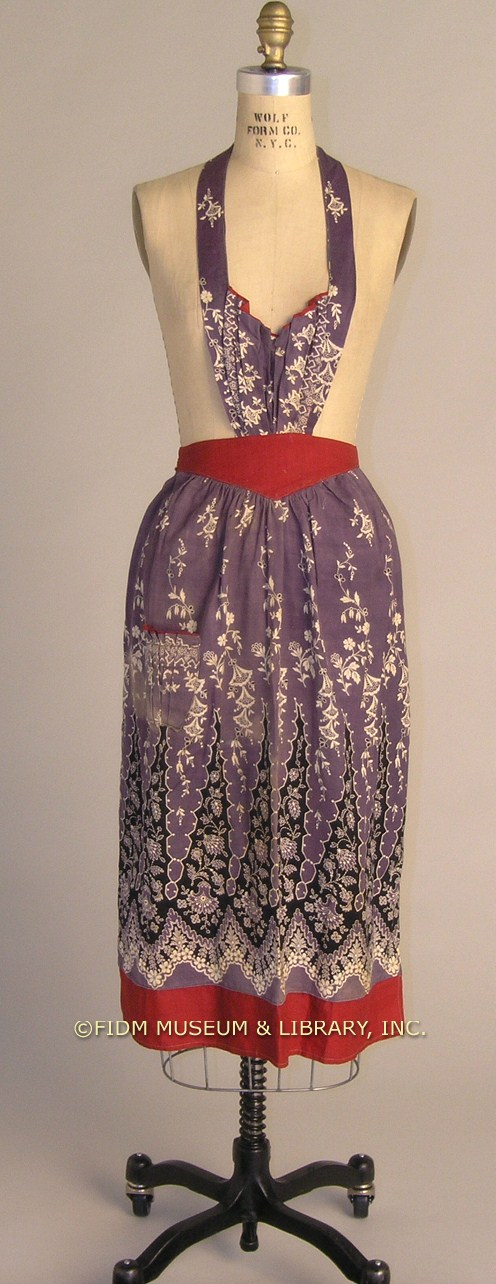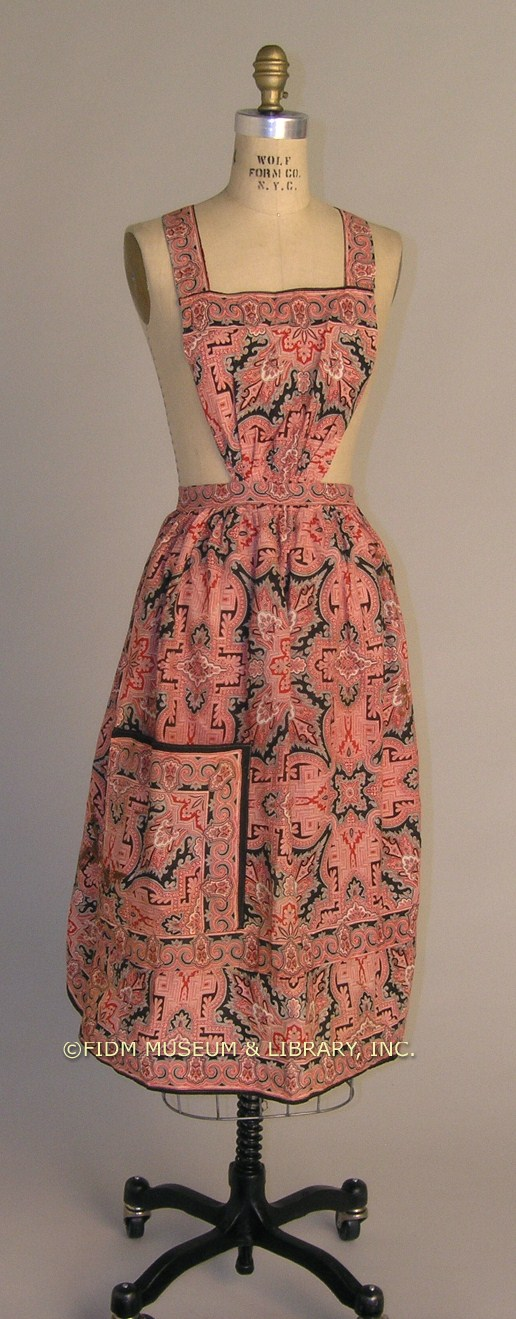The Thanksgiving meal is tradition-bound, featuring rich fare served only at the Thanksgiving table. With turkey, gravy, cranberries, stuffing, mashed potatoes, and pumpkin pie, the typical Thanksgiving meal requires hours of preparation. Though your meal might include different dishes, you'll probably spend at least an hour or two in the kitchen preparing for this week's Thanksgiving celebration. In honor of all that roasting, baking and stirring, today's post reflects on the ultimate domestic fashion accessory, the apron. First published in 2009, this post describes how and why the division between plain and fancy aprons arose in the late 19th century.
 Fancy apron
Fancy apron
1895-1905
Gift of Ms. Judy Thomsen
S2004.823.2
In practical terms, aprons are merely protective overgarments, worn to prevent food or dirt from staining clothing. Despite these functional origins, aprons have taken on the much larger job of signifying feminine domesticity. This is particularly true of aprons featuring brightly patterned fabric or decorative embellishments. In the late 19th and through the mid 20th century, plain, utilitarian aprons were worn while doing work (cleaning, cooking) in the kitchen or home, and colorful aprons were worn when receiving guests or serving food. Thus, decorative aprons became a public display of a competent and dedicated homemaker. Even today, an image of a woman or man wearing an apron is intended to convey domestic prowess.
The distinction between plain and colored aprons was particularly important in the late 19th century, when many households began to hire servants. In order to provide visual differentiation between hired hands and the lady of the house, household maids always wore white aprons when interacting with visitors. In early 20th century pattern books and kitchen manuals, white full aprons are usually labeled "maid's aprons" while those made of patterned fabric are designated "fancy aprons." Though fancy aprons were not strictly necessary, it was suggested that no woman's wardrobe was complete without a fancy apron to spruce up her everyday dress.
 Fancy apron
Fancy apron
1895-1905
Gift of Ms. Judy Thomsen
2004.823.3
Though readymade aprons were widely available, fancy aprons were often made out of fabric leftover from other projects. This frugality served the dual purposes of saving money and demonstrating sewing ability. This pink and black apron was possibly made from a scarf or other large panel of fabric; note the distinct border visible at the hem. This same border print also appears in the shoulder straps and waistband. Made from lightweight, printed cotton, this apron features a dense, allover print resembling those found on woven wool paisley shawls, a popular accessory through the 1860s. Printed imitations of the paisley shawls were widely available. When the paisley shawl went out of fashion, a frugal woman perhaps used her inexpensive printed version to create the fancy apron seen here.
The full skirt of this fancy apron can be tied in back. This would provide full coverage of a woman's dress and suggests that this apron might have been worn for very light housework. Alternatively, it could have been worn for sewing, another occasion when it was appropriate to wear a fancy apron.


